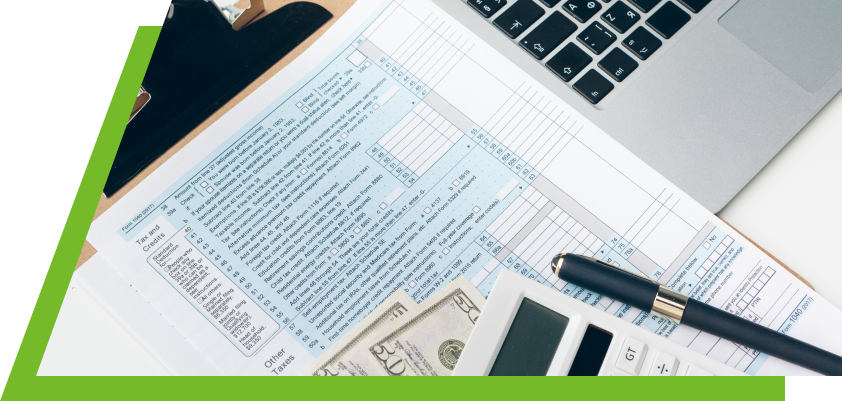
A loan calculator is a powerful tool that helps you see how different factors shape your monthly payment. According to the Consumer Financial Protection Bureau, you have the right to see transparent details about how much you owe and how long repayment may take. Bell Finance & Diamond Finance supports this standard because we want you to stay informed and feel confident about your choices. We believe a simple online tool can save you time, reduce confusion, and keep your finances on track.
Our loan repayment calculator shows how the interest rate, principal, and duration work together to produce a clear payoff schedule. Some borrowers use our calculator to compare personal loans or auto loans, while others want to check their student loans and see how an annual percentage rate can change monthly bills. Learn more about how our calculator can help you with your existing loan balance below. Then, contact us for help reviewing your options!
What Is a Loan Repayment Calculator?

A loan repayment calculator is a straightforward online tool that estimates what you owe based on your chosen loan amount, interest rate, and loan term. It breaks down how each monthly payment contributes to paying off the principal and the interest on your debt. People often use it to gauge how different loan interest rates affect their schedule and total cost. According to the Federal Trade Commission, using reliable tools can help you make wise decisions and avoid surprises.
Purpose and Benefits of Using a Calculator
A loan payment calculator gives you a quick look at how changing different factors alters your monthly costs. It also helps you see how various repayment strategies measure up so that you can pick the best one for your needs. A few key benefits of using a loan calculator include:
- Clearer Budgeting. You can estimate how much of your income will go toward each loan payment. This gives you a better idea of how to manage other expenses each month.
- Informed Comparisons. You can use personal loan calculators to look at different offers side by side. That helps you pick the deal that fits your goals.
- Flexible Scenarios. You can adjust factors like loan-to-value ratio or down payment to see how these changes alter your monthly bill. It is easy to see how a secured loan compares to an unsecured loan in this way.
- Long-Term Savings. Tools like this help you see how fixed interest rates can keep costs stable and predictable. They also show how variable terms might cost more over time.
- Multiple Loan Types. You can evaluate federal loans as well as private options with just a few clicks. This covers everything from personal debts to business expansions.
These benefits let you decide how to handle your repayment plan at any stage of the process. You will have a clear sense of your total obligations before you sign on the dotted line.
How a Loan Calculator Can Help Manage Debt
A user-friendly calculator can simplify the complex math behind loan interest and principal repayments. It helps you break down every payment so you see exactly where your money goes. This approach reduces stress and uncertainty about how much you owe month to month. According to the Federal Reserve, borrowers who track their debt closely are less likely to face late fees or defaults.
You can use the tool to compare many types of debt, including your school or mortgage balances. When you see how your monthly installments add up, you can plan for future costs more effectively. This transparency helps you decide whether you should refinance or shift your budget. It also gives you the freedom to explore different payoff speeds without risking surprise fees.
Use Our Loan Repayment Calculator!
dev team, can we put together a loan repayment calculator to display here?
Key Components of a Loan Repayment Calculator

Every tool breaks down a few core elements to give you accurate results. These elements include the loan principal, the interest rate, and the loan term. They work together to show how much each monthly installment will cost.
Loan Principal Amount
The principal is the base loan amount you borrow before interest fees add up. This figure plays a big role in determining your monthly costs. If you borrow a higher principal, you will likely pay more in interest over time. By comparing different principal amounts, you can decide how much you actually need.
Interest Rate and Loan Term
The interest rate decides the extra percentage you pay on top of the principal each month. A shorter loan term usually means higher monthly costs but less total interest, while a longer loan term leads to lower payments but more overall interest paid. You can experiment with these timelines to see how they affect your total expenses. This knowledge puts you in control of your long-term debt planning.
Monthly Payment Breakdown
A monthly payment typically includes both principal and interest portions. In some cases, taxes and other fees may appear in this figure, too. When you see a detailed breakdown, you know exactly how much goes to the principal and how much goes to the interest. This insight is helpful when deciding if you want to pay your debt faster.
How to Use a Loan Repayment Calculator Effectively
You can begin by typing in your loan details, such as the amount you owe and your expected term. Then, the calculator will show you how variations in your interest rate or monthly payment schedule will affect your total costs. Review the data closely so you can make informed changes to your plan.
Understanding the Results
The numbers will display your estimated costs over the course of your chosen term. They show a timeline for when your balance should reach zero if you pay on schedule. You can see how much interest you pay each month and how much is left of your principal. These results let you plan for big events, like vacations or house repairs, with fewer financial shocks.
Adjusting Loan Terms to Fit Your Budget
You can change the length of your loan or your interest settings to see how it affects monthly totals. If you shorten the duration, you pay more per month but save on long-term interest. If you lengthen it, you reduce monthly stress but could pay more overall. Finding the balance that works for you is the key to responsible debt management.
Comparing Loan Repayment Options

Sometimes, you have more than one path to repay your debts. Comparing different timelines and interest rates can reveal hidden costs or potential savings. This step helps you decide if you should choose a new lender or keep your current plan.
Short-Term vs. Long-Term Repayment Plans
A short-term plan usually has higher payments but a lower overall cost since you pay less interest. A long-term plan offers smaller monthly bills but increases the total amount you pay in interest over time. You need to balance your immediate budget needs against what you could save in the long run.
For example, a shorter plan might have bigger payments but less total interest. However, a longer timeline might cost more but could fit more comfortably into your monthly budget. Each option has pros and cons that depend on your personal situation.
How Extra Payments Can Save on Interest
Paying more than the minimum can trim months or even years off your loan. When you direct extra funds to the principal, you reduce the amount on which interest is calculated. This means you can pay less interest over the life of the debt. Always check with your lender to confirm that additional payments go straight to the principal.
Is Now the Right Time To Adjust Your Payment Plan?
Life circumstances can change at any moment, affecting your ability to keep up with your current schedule. Maybe you got a raise, or perhaps you face new expenses like medical bills. Either way, it is wise to review your plan to see if a different approach might fit better. Do some research, plug your numbers into a reliable calculator, and compare your potential outcomes.
If you see that your interest costs keep rising, you might benefit from adjusting your loan. You could switch to a different rate structure or try a new lender if it saves you money. This approach is especially helpful if you have multiple debts and want to simplify. Staying proactive with your finances can improve your credit profile and long-term security.
FAQs
What if my credit score is not perfect?
You can still use a calculator to see how a higher interest rate might impact your monthly bills. In many cases, improving your credit over time can lead to better loan offers.
Can I use these calculators for mortgage estimates?
Yes, many loan calculators have fields for property taxes, insurance, or other costs associated with a mortgage. You can compare different terms and see how each option fits your budget.
Do calculators charge any fees?
Most online calculators are free to use, including those hosted by financial institutions. You can typically access them without any hidden charges.
Will using a calculator guarantee my loan approval?
No, a calculator only provides estimates based on the data you enter. Lenders have their own criteria and approval processes.
How often should I revisit my repayment plan?
Check it whenever your income or financial goals change. This helps you stay on track and avoid unwelcome surprises.
Contact Bell Finance & Diamond Finance for Help With Your Loan Repayment Plan

We know every borrower has a unique story, and we want to guide you toward the best strategy. At Bell Finance & Diamond Finance, our team can walk you through different repayment scenarios and help you make an informed decision. Contact us today to explore your options and see how our expertise can make a difference.
